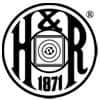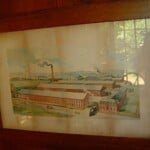
Introduction
Few names in the American firearms industry evoke the same sense of nostalgia and practical reliability as Harrington & Richardson (H&R). Founded in 1871, this legendary firearms manufacturer became synonymous with affordability, innovation, and rugged design. Throughout its history, H&R produced some of the most widely used civilian and military firearms, carving out a lasting legacy in the world of budget-friendly, durable guns.
From pioneering revolver mechanisms to crafting wartime arms, the company's impact on gun history is undeniable. Whether you’re a collector, historian, or simply interested in the evolution of American firearms, this deep dive into the company’s history will shed light on a brand that defined value and dependability for over a century.
Founding and Early Innovations
Harrington & Richardson was established in Worcester, Massachusetts, in 1871 by Gilbert H. Harrington and William Augustus Richardson. While Richardson primarily handled business affairs, Harrington brought technical expertise to the table. In 1874, the company introduced its first major success—the top-break revolver, a mechanism that allowed users to reload faster by breaking open the frame at a hinge to expose the cylinder.
Though H&R built on the existing Smith & Wesson top-break design, the company quickly became known for producing cost-effective, robust variations that appealed to working-class Americans. Its early revolvers, chambered in .22, .32, and .38 S&W, became common self-defense and utility weapons.
Expansion into Rifles and Shotguns
By the early 20th century, H&R diversified its product lineup to include single-shot rifles, shotguns, and more advanced revolvers. Many of these firearms were designed for hunting and sport shooting, catering to budget-conscious outdoorsmen who needed dependable weapons without breaking the bank.
Among their best-selling designs during this period were:
- Auto Ejecting Revolvers – A refinement of their top-break design that allowed spent casings to be ejected automatically upon opening.
- Single-shot break-action shotguns – Rugged, easy-to-maintain firearms that became farm and ranch staples across America.
- H&R Sportsman .22 Revolver (1932) – A high-capacity 9-shot top-break revolver beloved by small-game hunters and target shooters.
Military Contributions
H&R didn’t just cater to civilians. The company made significant contributions to the U.S. military during the 20th century, producing firearms for both World Wars, the Korean War, and beyond.
The M1 Garand Contract
During the Korean War, the company was awarded a contract to manufacture the M1 Garand, the legendary semi-automatic rifle designed by Springfield Armory. While they did not create the M1 Garand, their production met high military standards, ensuring American troops had reliable rifles in battle.
The Reising Submachine Gun
One of H&R’s most infamous military contributions was the Reising M50 and M55 submachine guns, issued to U.S. Marines in World War II. While innovative and lightweight, the Reising suffered from reliability issues, particularly in the Pacific Theater's harsh jungle conditions. Though withdrawn from frontline combat, it remained in use with law enforcement for years.
Government Contracts and Police Firearms
Beyond military arms, the company also manufactured .32 and .38-caliber revolvers for police departments, including the Boston Police Department. Their simple, cost-effective revolvers saw widespread use in municipal law enforcement through the mid-20th century.
Civilian Firearms and Continued Innovation
Even as H&R fulfilled military contracts, the company remained focused on designing affordable, practical firearms for civilians.
Among its most notable later offerings:
- The Handy-Gun (1920s-1934) – A compact, single-shot firearm chambered in .410 or .22 Hornet. Classified as an NFA firearm under the National Firearms Act of 1934, making legal ownership difficult today.
- The Ultra Slug Hunter (1980s) – A highly accurate single-shot shotgun designed for slug hunting, featuring a rifled barrel for increased precision.
- The H&R 999 Sportsman – One of the most beloved .22 revolvers ever produced, featuring a top-break 9-shot cylinder for quick reloading.
Financial Struggles and Ownership Changes
Despite its strong product lineup, H&R faced economic difficulties by the 1980s, struggling to compete with the growing popularity of polymer-framed pistols and modern bolt-action rifles. In 1986, the company ceased operations, closing its Worcester factory.
Revival as H&R 1871
In 1991, the brand was revived by Marlin Firearms, operating under the name H&R 1871. The new entity focused on single-shot rifles and shotguns, bringing back classics like the Handi-Rifle, a highly modular firearm with interchangeable barrels allowing users to switch calibers easily.
The Remington Era and Final Decline
In 2007, H&R 1871 was acquired by Remington Arms, part of the Freedom Group conglomerate. Under Remington, production continued, but investment in new designs slowed. By 2015, Remington ceased most H&R operations, effectively discontinuing the brand.
The 2020 Bankruptcy and the Future
Following Remington’s bankruptcy in 2020, the trademarks and assets were acquired by JJE Capital Holdings, the same firm behind Palmetto State Armory (PSA). While no new H&R firearms have been produced under JJE’s ownership yet, speculation continues regarding a potential revival.
The Lasting Legacy of H&R Arms
H&R remains one of the most recognizable names in affordable American firearms. Its dedication to simple, functional, and cost-effective weapons made it a household name for over a century. Collectors today cherish H&R revolvers, shotguns, and rifles for their reliability and historical significance.
Why H&R Firearms Are Still Popular Today:
- Reliability: Many of the companys firearms from the early 20th century are still in working condition.
- Affordability: Even today, used H&R guns offer budget-friendly alternatives for hunters and sport shooters.
- Historical Significance: Their contributions to military and police firearms make them valuable collectibles.
Conclusion
While the H&R brand no longer produces new firearms, its impact on the American firearms industry endures. From the early top-break revolvers to military rifles and the widely loved Handi-Rifle series, H&R’s legacy lives on in gun safes across the country. Whether in the hands of hunters, collectors, or history buffs, H&R firearms remain a testament to American ingenuity, affordability, and durability.
For those interested in classic American firearms, H&R represents an era when practical, no-frills design met blue-collar sensibility—a true legend in affordable arms manufacturing.
Read more here:
If you know of any forums or sites that should be referenced on this listing, please let us know here.







